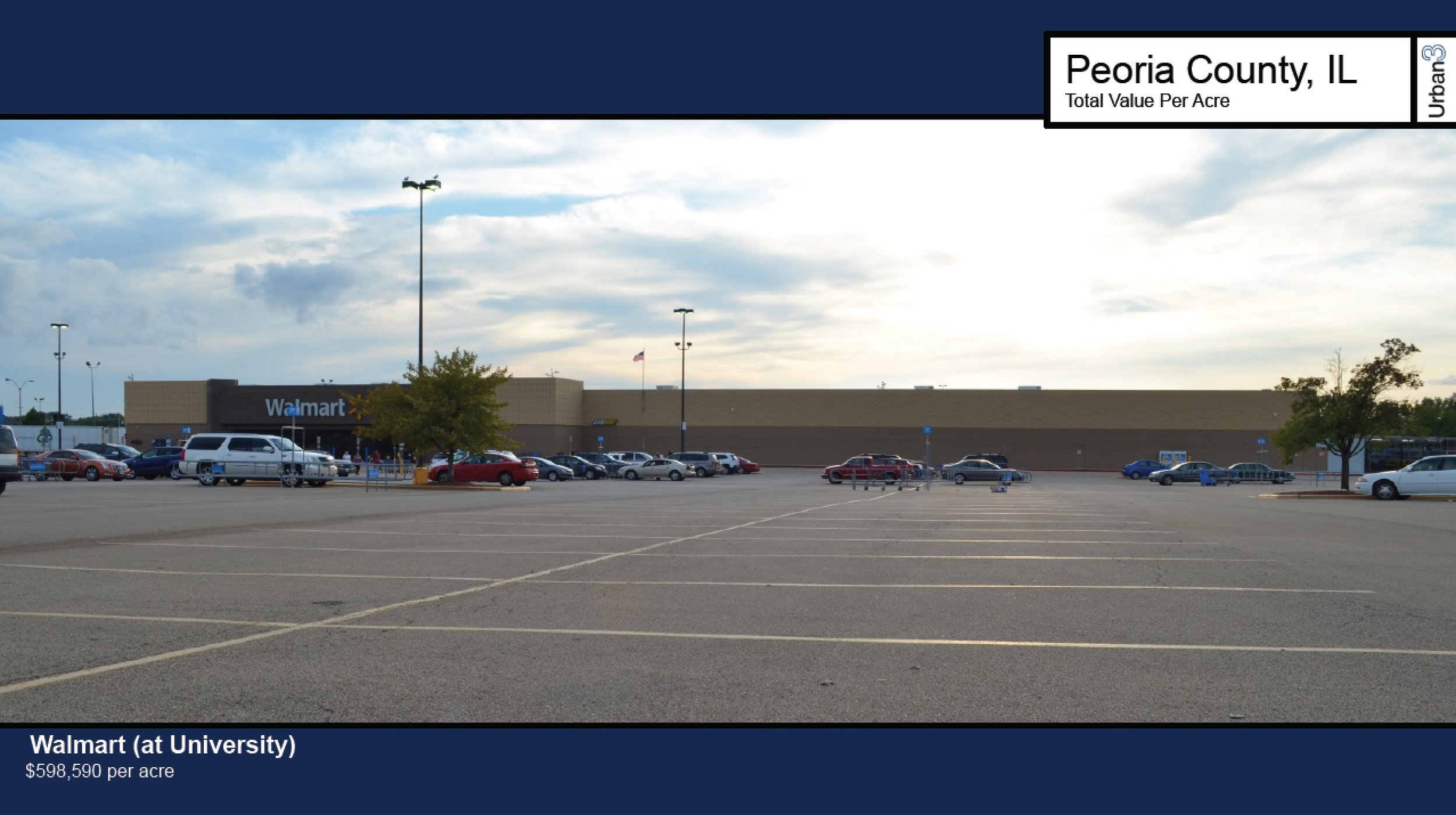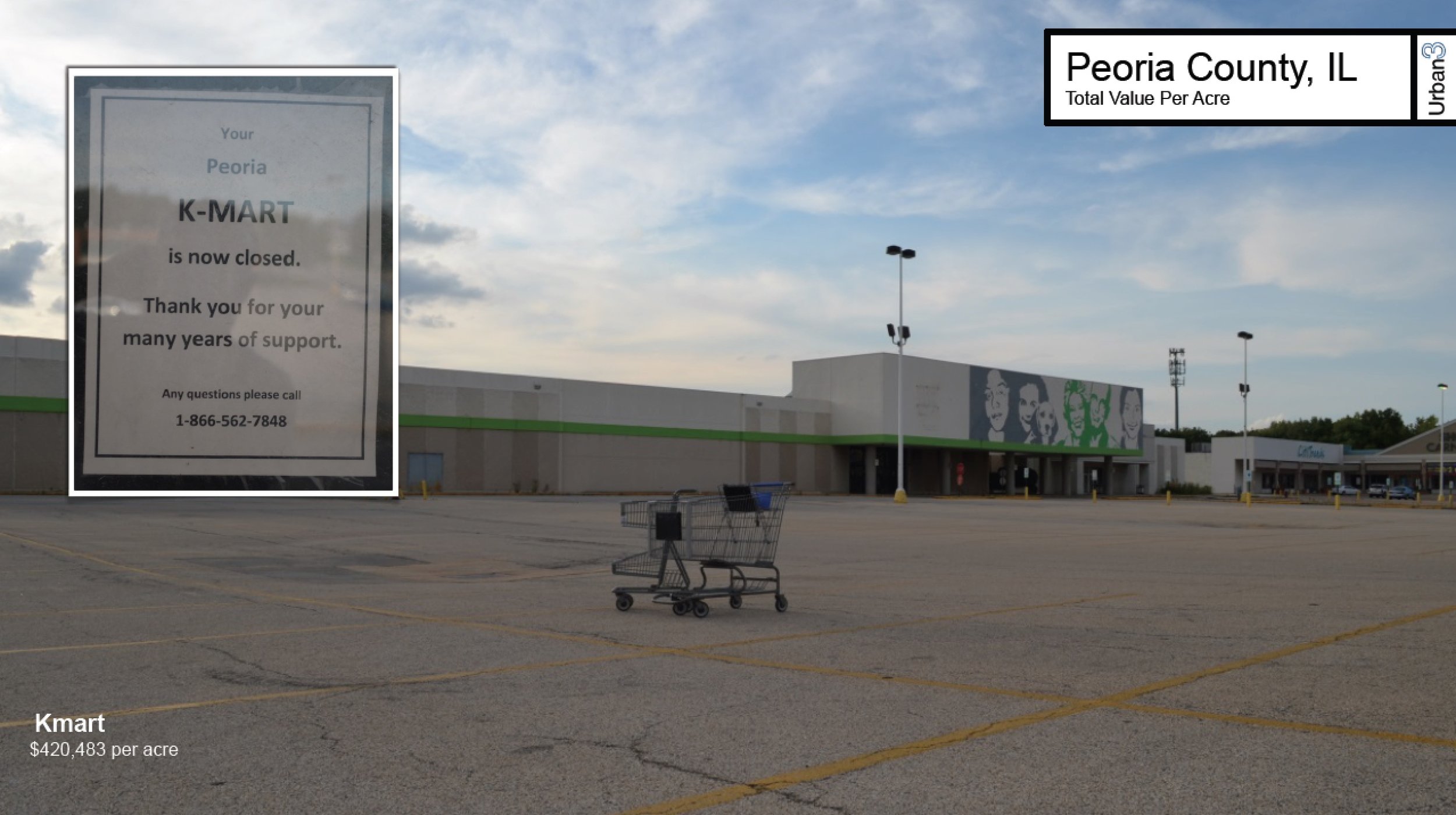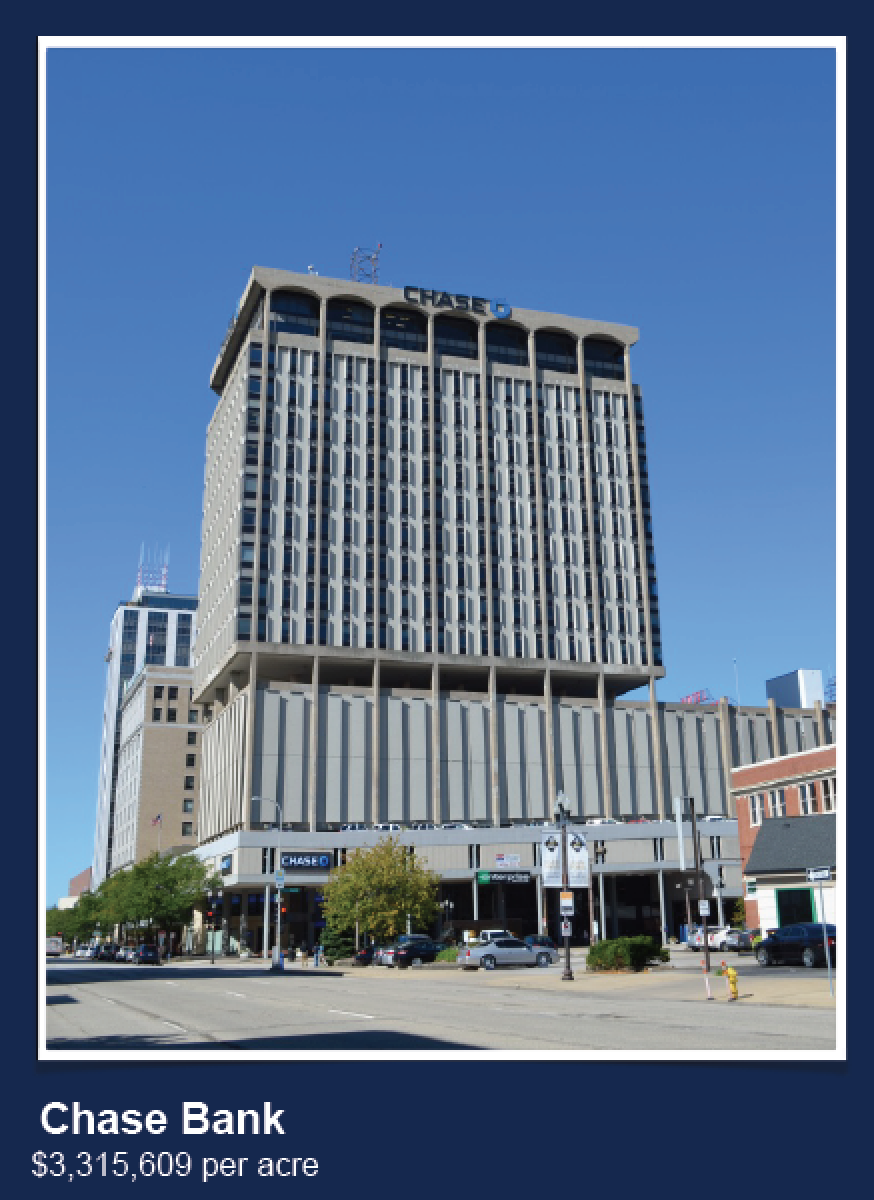The Little Law Office That Could
When Chuck Marohn was in Asheville earlier this year visiting our friends at Urban3, they showed him something so ridiculous and so indicative of our current land use problems that we had to share it with you.
During a previous trip to Peoria, IL, the Urban3 guys spotted an interesting building. Wedged amidst a sea of parking garages, a massive sports arena and several imposing office buildings in downtown Peoria:
Behold, the Gary Morris Law Office. Don't blink or you might miss it. (Explore it on Google Maps to see for yourself how ridiculous this place is.)
Josh McCarty at Urban3 says: "At first I didn’t think this was an actual building. I thought it was either a sign or a hut for the parking attendant." He was informed that "a barber actually had this building wedged in place to get business from passing lawyers and politicians in City Hall. When [the barber] retired, one of the lawyers loved it so much he moved in."
The property is just 10 feet wide and 85 feet deep. And in this tiny space, guess how much tax value per acre we get...
That's right: $3.2 million. Put another way, if this block was filled with similar structures instead of empty parking garages and vacant public plazas, it would be valued at $3.2 million. As it currently stands, that little building is punching far above its weight in terms of taxes paid and likely one of the highest tax payers on the block.
Here are some nearby Peoria buildings for comparison with tax productivity listed in the bottom left corner:





The incredibly low value per acre of the local Walmart and now-closed K-Mart should come as no surprise to Strong Towns readers. These one-story structures accompanied by vast surface parking lots consistently rob our cities of tax productivity. (Learn more about the big box problem.)
But it's shocking to see that even some of the largest office buildings in downtown Peoria with dozens of stories are merely matching the Gary Morris Law Office in tax productivity. Here's a graph comparing the value per acre of several Peoria developments. Note that Gary Morris makes it into the top 10, despite its minuscule size.
Looking at the above images of Peoria, it's easy to see why so many structures have been built on a large scale, instead of the much more productive and easier to maintain scale of the Gary Morris Law Office: there's space available. Why would you build small when there's ample room to build big? But the time has come for American cities to recognize that building big is not financially prudent and it will not serve us in the long-term.
Imagine how much less infrastructure we'd use and how much better we'd capitalize on space if we worked on a small scale like the Gary Morris Law Office. Imagine how much more productive our towns could be.
A big thanks to Josh McCarty and the team at Urban3 for their work on this analysis and graphics.







Many of the problems in our cities come down to a shortage in the budget—but the solution to this problem is staring us in the face.